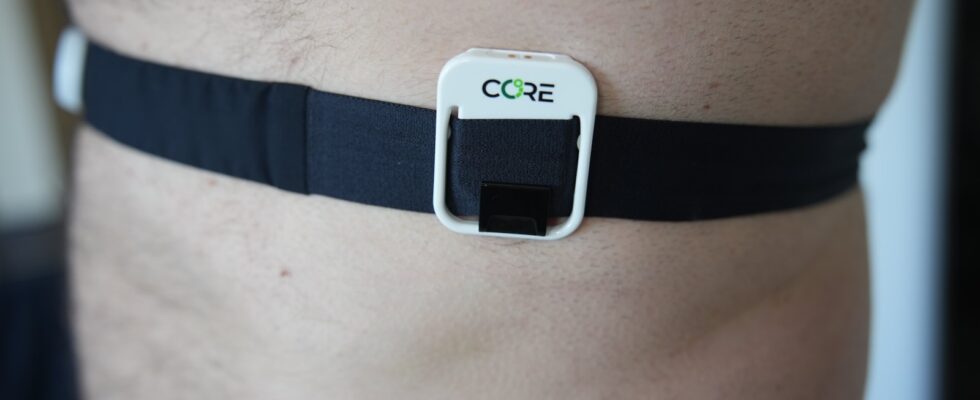Wearable technology has advanced significantly over the past decade, and today amateur athletes can collect vast amounts of data with their smartwatches, GPS sports watches, and external heart rate monitors. Over the past two months, I’ve been running and cycling with the CORE sensor, a wearable device that captures and records your internal body temperature without the need for invasive methods.
Heart rate tracking has always been the most common metric in tracking runner performance, but over the past couple of years, more and more people have become interested in running power. Most new GPS sports watches and smartwatches now record and calculate running power to normalize the rough terrain you’re training on and the physical effort you’re putting in.
The main takeaways from the Core sensor body temperature sensor
- The Core sensor is sold at a price of €299.
- It provides accurate internal body temperature, is lightweight, has a long battery life and a functional smartphone app.
- The device is quite expensive and must be connected to a chest belt or adhesive patch.
Core’s body temperature sensor adds another element to your training regime, and while it’s more important for professional athletes, its price allows even amateur athletes to access its types of information. When I first tested it in January, the outside temperatures were too cold for me to measure a noticeable increase in my internal body temperature.
However, after a trip to Australia, I was able to see for myself the value of the Core measures. I did three long runs during my first week in temperatures you only see in the height of the southern summer and I was surprised to see my core temperature and fatigue index. heat increase to a level where the device indicated that my performance would begin to suffer.
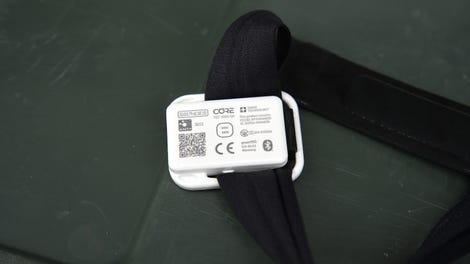
Matthew Miller/ZDNET
Identify optimal cooling strategies during tough workouts
With my recent weight loss, my running pace increased significantly and, given the flat terrain where I was running, I was able to maintain a good speed easily. After 35 to 40 minutes, however, my pace decreased while my sweating increased. I slowed down a bit and saw my internal temperature drop as well.
This illustrates one of the primary uses of Core’s body sensor by athletes: identifying optimal cooling strategies during tough training sessions. Core’s website features experiences of cyclists reporting an 8% increase in speed after just 10 days of heat-focused training.
Unfortunately, I didn’t train with the Core long enough to develop a training strategy, but I was able to gather enough data to see the potential benefits of training with the sensor.
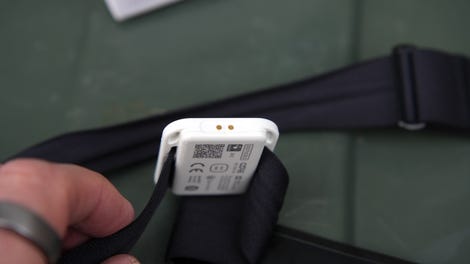
Matthew Miller/ZDNET
6 days of continuous use on a full charge
One of the easiest ways to use the Core sensor to track your temperature is to attach it to a heart rate chest strap. I ran with the sensor attached to the strap of my Garmin HRM-Pro Plus. The clip holds the Core in place very well, but you can also use the included single-use adhesive patches to attach the Core sensor directly to your body.
As for powering the device, the Core Sensor charges via the USB-A cable with its own cable. Core claims six days of continuous use on a full charge, and in my eight workouts with the device, I only recharged it once to ensure it would have enough juice for all my longest runs.
The Core measures your skin temperature and then uses its proprietary algorithms to calculate your internal body temperature. Tests have validated the accuracy of the Core sensor. So there is no need to use an internal probe or electronic pill to measure your internal temperature. Since I haven’t used a rectal probe since I was a child, it was interesting to see the measurements of my internal temperature!
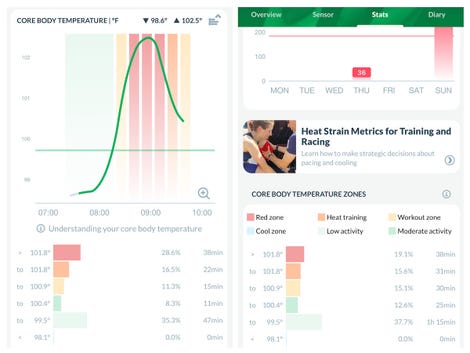
Matthew Miller/ZDNET
Heat Fatigue Index
While there is a Core smartphone app to collect and display all your measurement data, you can also connect the Core sensor to your current Garmin, Coros, Suunto, Apple Watch, and other wearables. I mainly used it with a Garmin Quatix 7 Pro and a Coros Apex 2 Pro. It was therefore very convenient to see the data measured by the Core sensor appear in a separate field during the race, and then in the summary data pages of the associated smartphone applications.
The highest body temperature I measured during my five training sessions was 39°C during the last of my three races. This race was just over 7 miles and finished around 10am, so the temperature outside was rising.
My heat fatigue index also reached 4.12 during this race and it was clear that if I had run longer I would have had to slow down and reduce my core temperature. Knowing these heat load and training load parameters provided by the device can go a long way toward optimizing a training regimen and understanding your body’s physical limits.
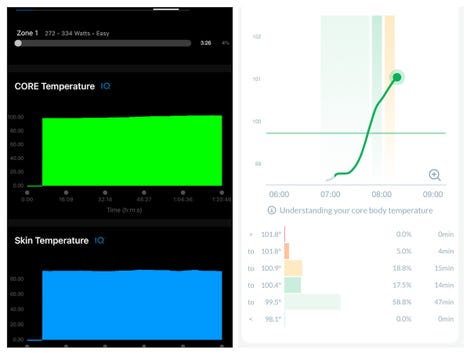
Matthew Miller/ZDNET
300 € all the same
If you are considering using the Core Body Sensor to help you train better, I highly recommend reading the manual and FAQs posted on its website. You’ll also find testimonials from athletes that will help you determine if this nearly $300 sensor is worth purchasing to better understand your body and how it responds to the environment and your exercise regime. training.
Core says internal temperatures above about 39°C generally begin to put the human body at risk of heat stress.
Purchasing advice for Core sensor body temperature sensor
Although I can train for my simple runs and recreational activities without using a smartwatch or other wearable, I find it fascinating to capture the data and view training reports.
It’s fascinating to see how accurate Core’s sensor is and how more affordable it is to use than the advanced methods of measuring body temperature traditionally used by elite athletes.
Source: “ZDNet.com”
